Your Guide to Disappointing Lesbian Cinema
by Lindsay Miller
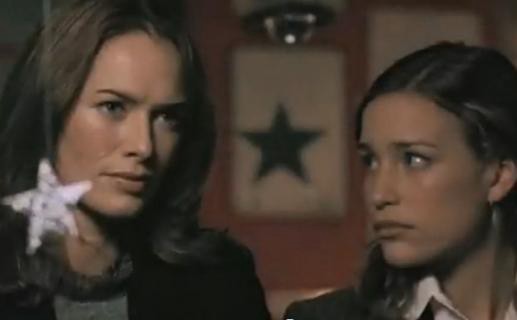
It’s a well-known fact in the queer community that dykes will watch literally any movie (or read any book) about dykes. It doesn’t matter who’s in it or what the plot consists of: As long as there is girl-on-girl action, we’re there. Even girl-on-girl subtext, and oh, we are masters at uncovering that shit. Fifteen minutes after coming out we can discern Sapphic intention in the angle of a glance. And not only will we watch it ourselves, we’ll recommend it to all our friends. “You’ll love it!” we say. “The two girls totally get it on.” And that’s all it takes — within a week, our entire social circle has seen it. If you doubt that this is true, consider the existence of The L Word.
Equally well-known is the difficulty in tracking down queer cinema that’s any goddamn good. There are a few gems out there, but so many gay and lesbian films feature lackluster acting, production values that rival your high school’s production of West Side Story, and character arcs that … well, we’ll get to that. Are our voraciously uncritical viewing habits actually contributing to the prevalence of mediocre dyke movies, or is it just an example of Sturgeon’s Law playing out over a relatively small sample size? I don’t know. I’m here to complain about problems, not offer solutions.
But the corollary to Sturgeon’s Law states that if you watch every single goddamn lesbian movie Netflix has to offer, occasionally you will stumble across some gems. And, if you are me, you will still complain about them, because why can’t all movies just be perfect and preferably star someone who looks exactly like Eliza Dushku, but can act? Even in the greatest dyke flicks, certain irritating tropes come up again and again, painting a severely flawed portrait of lesbian relationships. So here, for your enjoyment, are some thoughts on four of the best — and one of the worst — contributions to the lesbian cinematic canon. (Obviously, spoiler warning times infinity, but these have all been out for years, so if you haven’t seen them yet I’m guessing they’re not high on your list of priorities.)
1. Imagine Me and You (2005)
Imagine Me and You follows one of the most basic queer plot lines imaginable: Girl marries boy. Girl meets girl. Girl fights irresistible attraction to girl, made considerably more difficult by the fact that the second girl is Sarah Connor, from the Terminator TV show, only with a British accent, and who among us could keep our pants on in the face of a British Sarah Connor? Girl and boy split up, girls live happily ever after.
Why it’s delightful: Sarah Connor, dude! And they make out in the back of a flower shop, thereby demonstrating some of the safety hazards inherent in, you know, rolling around on a bunch of thorns. And everybody, including First Girl’s cast-off husband, gets a happy ending.
Why it’s obnoxious: One of my least favorite things about romantic comedies is the insistence on “love at first sight.” No matter how instantly drawn to someone you feel, relationships take work, and I am so fucking tired of seeing two people disappear into the sunset as though, now that they’ve found each other, nothing bad will ever happen again. This trope is usually presented, in lesbian movies, with a girl-power twist: She was having relationship troubles with her boyfriend, but she didn’t realize that it was because she’s actually a dyke! Now she’s with a woman and they have NO relationship troubles at all! Hot lesbian sex 4-eva! Obviously I am not taking an anti-hot lesbian sex stance here; I just think it doesn’t do us any favors to portray lesbian relationships as a magical unicorn dream land full of organic vegetables and cunnilingus. Lesbians are people, and when they’re in long-term partnerships, they get bored with each other’s jokes and argue over who forgot to pay the car insurance. Relationships aren’t supposed to be quite that easy.
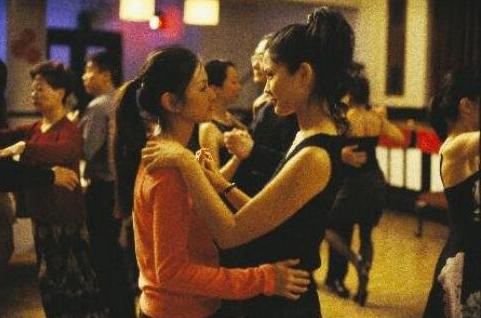
2. Saving Face (2005)
Things are a little more challenging — and therefore more believable — in Saving Face. Wil is a surgical resident working insane hours, Vivian is trying to choose between a prestigious ballet company and the modern dance career she really wants, and they can’t have sex at Wil’s place because her pregnant-out-of-wedlock mother is there.
Why it’s delightful: These are real people trying to deal with problems and choices that don’t all revolve around who is and is not gay. The story is concerned with family relationships through three generations, as well as the cultural conflict of existing within mainstream American culture and an insular Chinese community at the same time, and also, the question of who knocked up Wil’s mom. It’s more than just a coming-out story. And the ending is just adorable.
Why it’s obnoxious: Take all that away and what you have left is a coming-out story. Look: I am not opposed to coming out. People should come out! I myself have come out to my mother three times now and it’s more fun every time (she repressed the first two, but was pretty relaxed about the third). However, I have been queer, and hanging out with queers, for a significant portion of my life now, and if you are around queer people for any length of time you cannot help but notice that most of them partake of many exciting activities not directly related to exiting the closet. I really wish this weren’t such a central concern of so much queer cinema. By about halfway through the movie, Wil’s reluctance to go public with her relationship begins to seem improbable and contrived, as though it exists only to drag out the plot. I found myself imagining that I was Vivian’s BFF, and I took her out for margaritas and said, “Sweetie, you’ve given her like a million chances, maybe it’s time to move on,” and then I introduced her to some cute girl from my yoga class, because if I were a character in a movie I would probably do yoga. (I do not do yoga.) I just really feel like Vivian needs to get with someone who does not dick her around quite this much.
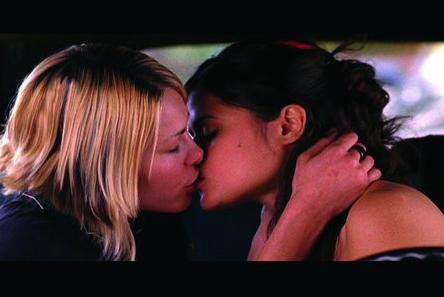
3. The Itty Bitty Titty Committee (2007)
This movie follows the less-ubiquitous “girl meets girl, girl engages in guerrilla body image activism, girls take over TV station for somewhat poorly-defined political purposes” story arc.
Why it’s delightful: The title, obviously. Also the soundtrack, which is all Bikini Kill and Le Tigre and oh man, just so much Kathleen Hanna, I can’t even tell you how happy it makes me. Also, the presence of a trans character, and a bisexual character who is not “just going through a phase,” AND an interracial queer couple, like all of those things are not even a thing. So awesome! Also, the ineffectual-but-oh-so-earnest feminist activism! I kind of want to hang out with these girls, I’m not gonna lie.
Why it’s obnoxious: For most of the movie, the protagonist Anna is all obsessed with radical feminist Sadie, but Sadie has a girlfriend, and generally seems like kind of a selfish heinous person. They boink, Sadie refuses to leave her girlfriend, etc., but Anna is still all sprung on her. And the happy ending is that they end up together. This is another of my least favorite romantic comedy tropes. No matter how unlikable the love interest is, we’re supposed to cut her all the slack on the world, because she was just unable to admit how much she loved the protagonist. Also, they’re hot chicks, so just relax and enjoy the hot chicks getting it on. Sadie has never demonstrated a single redeeming human characteristic! Anna can do better!
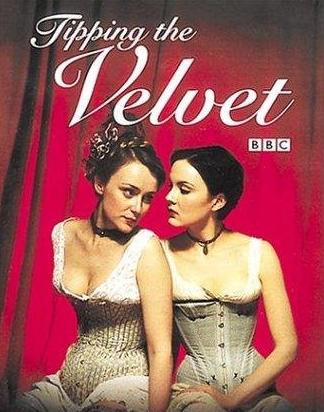
4. Tipping the Velvet (2002)
Tipping the Velvet is about fin de siècle drag kings in London. Nan leaves her small town with its oyster-based economy to follow dashing male impersonator Kitty Butler to the big city, where she has adventures and learns a lot of euphemisms for lesbian sex.
Why it’s delightful: It’s about fin de siècle drag kings in London. If you’re not already adding it to your Netflix queue based on that description, I don’t understand your life at all. But you’ve probably already either watched it or read the book, at least if you’re a lady who likes to stick it in other ladies.
Why it’s obnoxious: I hate people who say this just as much as you do, but my God, the book is sooooooo much better. Book-Nan is one of my favorite fictional characters of all time. Movie-Nan is constantly moping about her life and wallowing in self-loathing. Okay, there’s a little wallowing in the book, but within a couple of chapters Nan gets it together and moves on to the next adventure, whereas all Movie-Nan has are adventures in whining. I like Book-Nan because she is delightfully gender-queer and always demonstrates agency in her sexual choices, from cutting her hair short for the first time to posing as a male prostitute. Movie-Nan kind of just lets things happen to her and then feels really bad about it. Also, when Kitty comes creeping back at the end, Book-Nan is like “Hell to the no, now where did my hot new girlfriend run off to?” but Movie-Nan actually CONSIDERS IT. The whole climax of the movie revolves around the question of whether Nan will stay with Flo or go back to Kitty, even though Kitty is clearly a total sociopath and also married. This is so much worse than Anna and Sadie. This destroys any possible respect I could ever have had for Movie-Nan. Why are romantic comedies so obsessed with women going back to people who have been shitty to them? They draw a lot of fire for being “idealistic,” but damn, rom-coms can be awfully cynical. So often the take-away message comes down to, “Well, you’ll probably never do any better, so… yay!”
Also, the songs they perform to are kind of bad. You should maybe just read the book instead.
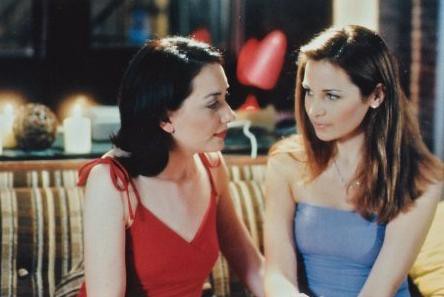
5. Kissing Jessica Stein (2001)
Why it’s the fucking worst: It was just a phase? Really, that’s what you’re leaving us with? “Sometimes women grow out of fucking women and become healthy, well-rounded heterosexuals”? Ew. I need to go wash my brain now.
Lindsay Miller likes bad movies better than good ones. She just started blogging at The Prettiest Princess.